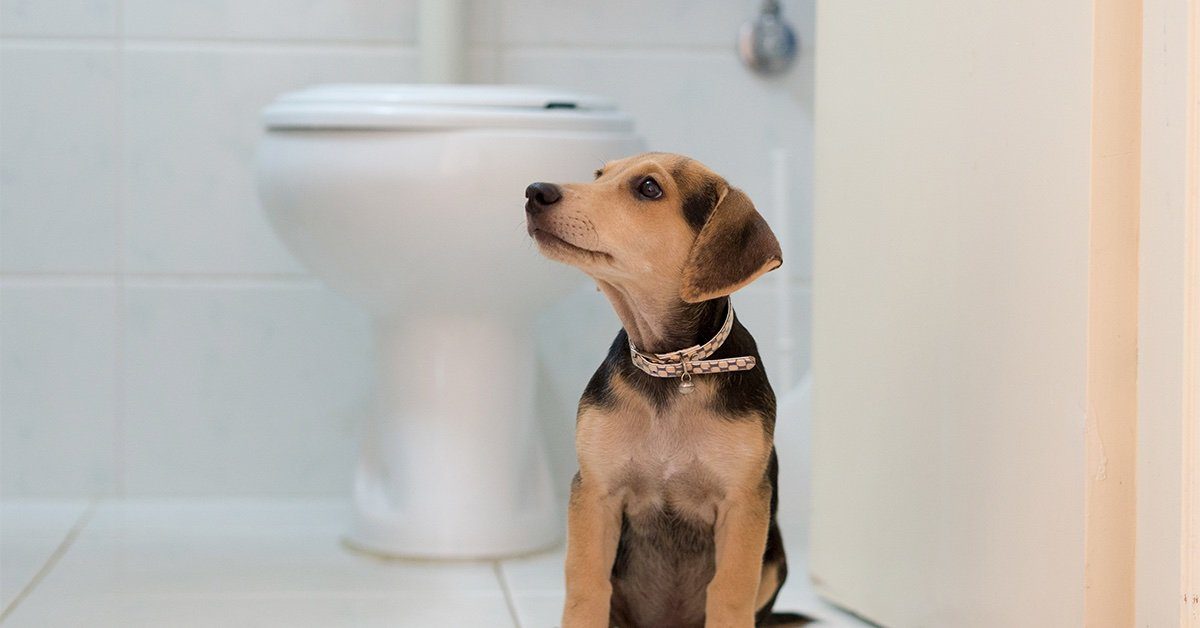Urinary tract infections in dogs, also known as bacterial cystitis, can cause pain and discomfort for your pup. If you suspect your dog has one, it’s important to get them checked out at the vet as soon as possible. Let’s take a look at the signs, symptoms, and treatment options if you’re a pet parent who thinks your furry friend might be suffering from a UTI.
What do UTIs in dogs look like?
UTIs can be hard to spot, which is why you should always take note of your pup’s potty habits. If your dog is attempting to pee small amounts every time you take them outside, needs to go more often, straining or crying when urinating, or having accidents in the house even when they are potty trained, it could be a sign of a UTI. The most obvious and alarming symptom is blood mixed in with your dog’s urine; if you notice this, you should call your vet immediately.
How do dogs get UTIs?
The most common cause of UTIs in dogs is bacterial infection. In fact, bacterial UTIs in dogs affect 14 percent of all canines at least once throughout their lifetime, which means it’s relatively common. The infection usually develops when bacteria that normally lives on the skin, in the mouth and the gastrointestinal (GI) system flows up the urethra into the bladder. This can occur if the area is contaminated with feces or other debris, or the dog has a condition that alters the normal composition of urine. Bladder stones can also predispose dogs to UTIs. In most cases, E. coli is the bacteria that causes UTIs in dogs.
If you suspect infection in your pup, make sure you seek out treatment immediately to prevent your dog’s condition from worsening.
Which dogs are most at risk for UTIs?
While no dog breed is immune from developing a UTI, some breeds are more susceptible than others. Breeds like the Shih Tzu, Bichon Frise, and Yorkshire Terriers are prone to developing bladder stones and may be more likely to develop UTIs. What’s more, female dogs can be more prone than males, as male dogs’ longer urethra means that bacteria takes longer to travel upwards and cause infection. In addition, spayed female dogs with low estrogen related incontinence are at increased risk for UTI. Dogs with hyperadrenocorticism and diabetes mellitus are also at higher risk for UTI.
Pet Pro Tip: Illnesses won’t wait to happen. You shouldn’t wait to enroll in pet insurance. From common parasite infections, to costly hereditary illnesses, pet insurance is worth it and can cover crucial eligible treatment your pet may need for their unexpected accidents and illnesses. Find out how pet insurance works, what pet insurance covers, and choose a plan today.
What are the symptoms of UTIs in dogs?
Similar to UTIs in cats, common symptoms of UTIs in dogs include:
- Bloody and/or cloudy urine
- Increased urine odor
- Needs to urinate more often, but when they do, urinates smaller amounts
- Straining or crying during urination
- Accidents in the house
- Licking the genital area
- Fever
- Increased thirst
- Lack of energy
Make sure you’re always watching out for changes in your dog’s peeing (and drinking!) habits to stop a UTI in its tracks, and be extra vigilant if you know that your lovable breed of dog is more susceptible to bladder stones.
How are UTIs in dogs diagnosed?
Once you notice your dog’s UTI symptoms and take them to the vet, your vet will take a close look at the chemical properties of your dog’s urine through a process called a urinalysis. To collect the urine, your vet will likely use a technique called cystocentesis, in which a needle is inserted into the dog’s bladder and urine is removed using a syringe. While your dog might squirm at the sight of a needle, the procedure is quick, relatively pain free, and leaves no lasting effects.
A vet will evaluate your dog’s urine to confirm whether or not they see signs of a UTI. In severe cases, a vet might prescribe blood work, x-rays (radiographs), or abdominal ultrasound to make sure that there are no underlying conditions such as bladder stones, kidney disease, or cancer causing the issue. In some cases, your veterinarian will have the urine cultured to determine the exact type of bacteria involved in the infection, and what antibiotics that bacteria is sensitive to in order to prescribe the right medication.
How are UTIs in dogs treated?
The good news is that treatment for UTIs in dogs is pretty easy. In most cases, it consists of a simple course of antibiotics prescribed by your vet, which often cures your pup’s painful pee problem right up. To aid the antibiotics, it’s helpful to increase your dog’s water intake, which will help dilute the bacteria in the bladder. For a common bacterial UTI, your pup should start feeling better within 24-48 hours of starting treatment. In some instances, your vet might prescribe pain medication and recommend a diet change if your dog has any crystals in the urine, or if bladder stones are diagnosed. In some cases, surgery is required to remove bladder stones. If your dog has another underlying condition that is contributing to development of a UTI, then treatment is required for those conditions as well to prevent reoccurence.
How much does it cost to treat UTIs in dogs?
After a vet visit and a course of antibiotics, the average cost of treatment for UTIs in dogs is about $274. However, if the UTI develops into something more serious or you discover it’s caused by an underlying condition – warranting surgery or other more intense treatments – fees can pile on and bring costs into the thousands.
How can you help prevent UTIs in your dog?
The best things pet parents can do to prevent UTIs in dogs is to make sure they drink lots of water, go to the bathroom on a regular basis, eat nutritious food that will maintain a strong immune system, and have any underlying disorders that contribute to the development of a UTI treated. If your dog suffers from recurring UTIs, your vet might recommend supplements or probiotics.
If your pup’s diagnosed with a urinary tract infection, having pet insurance can help you say ‘yes’ to the best care, even when it’s costly. Check out how one of Pumpkin’s dog insurance plans can help cover the cost of a UTI and more.
*Pumpkin Pet Insurance policies do not cover pre-existing conditions. Waiting periods, annual deductible, co-insurance, benefit limits and exclusions may apply. For full terms, visit pumpkin.care/insurancepolicy. Products, discounts, and rates may vary and are subject to change. Pumpkin Insurance Services Inc. (Pumpkin) (NPN#19084749) is a licensed insurance agency, not an insurer. Insurance is underwritten by United States Fire Insurance Company (NAIC #21113. Morristown, NJ), a Crum & Forster Company and produced by Pumpkin. Pumpkin receives compensation based on the premiums for the insurance policies it sells. For more details visit pumpkin.care/underwriting-information and pumpkin.care/insurance-licenses.




